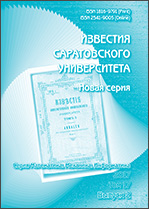|
This article is cited in 4 scientific papers (total in 4 papers)
Scientific Part
Computer Sciences
Construction of 3D solid vertebral models using convolutional neural networks
A. S. Beskrovny, L. V. Bessonov, D. V. Ivanov, V. S. Zolotov, D. A. Sidorenko, I. V. Kirillova, L. Yu. Kossovich
Saratov State University, 83 Astrakhanskaya St., Saratov 410012, Russia
Abstract:
The quality of solving the problem of biomechanical modeling largely depends on the created solid-state model of the biological object under study. Building a model based on computed tomography data for a particular patient is possible both in manual mode (software packages for processing medical images) and using automated tools for building a model (image segmentation), which significantly speeds up the process of creating a solid model, in contrast to the manual mode. The complexity of the automated approach lies in the reconstruction of a segmented image into a solid model suitable for biomechanical modeling. As a rule, automatic segmentation is hampered by the presence of anatomical pathologies, noise, and the presence of implants in the images of a digital study. The article proposes a method for creating a solid model from a point cloud obtained from computed tomography data using convolutional neural networks SpatialConfiguration-Net and U-Net. The results of the implementation were applied in the development of the “Module of Solid Models”, which is included in the prototype of the medical decision support system SmartPlan Ortho 3D, which is being developed at Saratov State University within the framework of the project of the Foundation for Advanced Research. The system is included in the register of Russian software.
Key words:
SpatialConfiguration-Net, U-Net, solid model, biomechanical modeling, computed tomography, 3D segmentation.
Received: 15.03.2021
Accepted: 29.04.2021
Citation:
A. S. Beskrovny, L. V. Bessonov, D. V. Ivanov, V. S. Zolotov, D. A. Sidorenko, I. V. Kirillova, L. Yu. Kossovich, “Construction of 3D solid vertebral models using convolutional neural networks”, Izv. Saratov Univ. Math. Mech. Inform., 21:3 (2021), 368–378
Linking options:
https://www.mathnet.ru/eng/isu902 https://www.mathnet.ru/eng/isu/v21/i3/p368
|

| Statistics & downloads: |
| Abstract page: | 129 | | Full-text PDF : | 63 | | References: | 26 |
|




 Contact us:
Contact us: Terms of Use
Terms of Use
 Registration to the website
Registration to the website Logotypes
Logotypes








 Citation in format
Citation in format 
